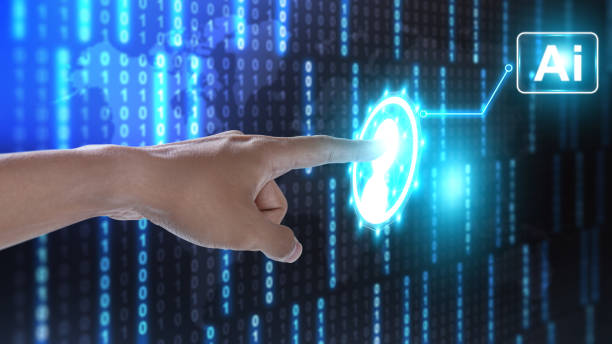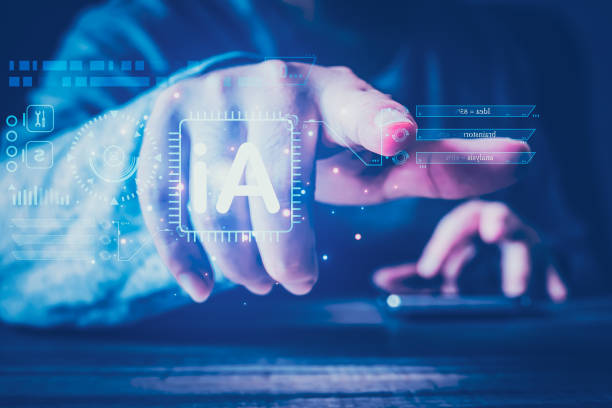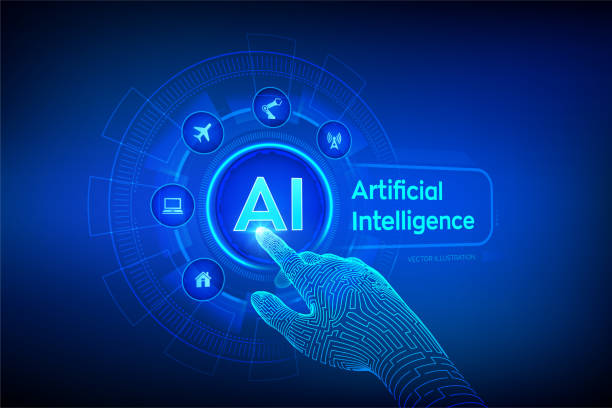What is an Artificial Intelligence Robot? A Comprehensive Definition
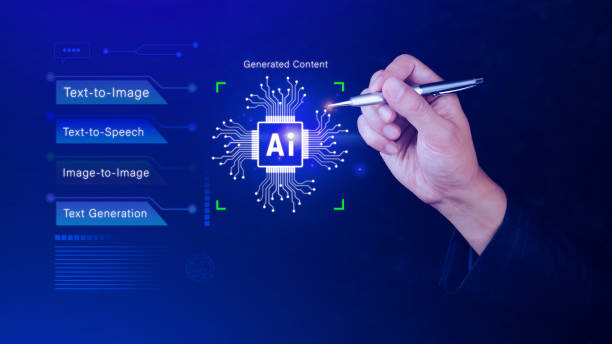
#Artificial Intelligence Robot (AI Robot) is a combination of two fundamental concepts: robotics and artificial intelligence.
Generally, a robot refers to a machine that is capable of performing a series of specific tasks automatically.
These tasks can include movement, manipulation of objects, or interaction with the environment.
Artificial intelligence also refers to the ability of a computer system to mimic human cognitive functions, such as learning, problem-solving, and decision-making.
Therefore, an Artificial Intelligence Robot is a robot that, using artificial intelligence algorithms, is capable of performing more complex and intelligent tasks than traditional robots.
These robots can collect information from the environment through sensors, process this information using artificial intelligence, and make decisions and take actions based on it.
An Artificial Intelligence Robot actually tries to increase efficiency and accuracy in performing various tasks by simulating human behavior and performance.
These robots, utilizing advanced technologies, can be used in various fields such as industry, medicine, services, and education.
Common applications include automated production lines, robotic surgeries, customer service provision, and online education.
With the increasing advancements in the field of artificial intelligence and robotics, it is expected that artificial intelligence robots will play a more important role in our daily lives.
Did you know that customers’ first impression of your company is your website? Multiply your business credibility with a powerful corporate website from Rasaweb!
✅ Exclusive and eye-catching design tailored to your brand
✅ Improved user experience and increased customer acquisition
⚡ Get free consultation!
The Main Components of an Artificial Intelligence Robot
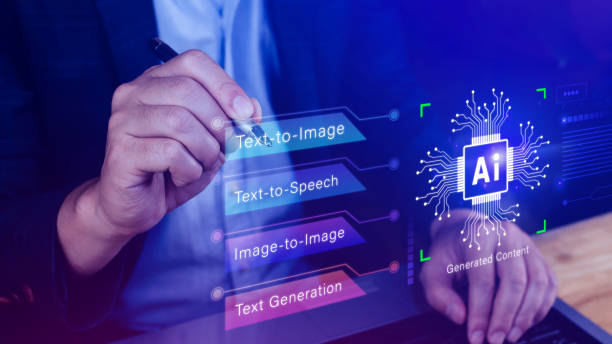
An artificial intelligence robot consists of several main components, each of which plays an important role in its overall performance.
These components include: 1.
**Hardware:** Includes the robot’s body, motors, sensors, and other mechanical and electronic components that enable the robot to interact with the physical environment.
Sensors help the robot collect information such as temperature, light, sound, and pressure from the environment.
2.
**Software:** Includes artificial intelligence algorithms, control programs, and the robot’s operating system, which are responsible for processing information, making decisions, and controlling the robot’s movement.
Artificial intelligence algorithms allow the robot to learn, recognize patterns, and solve problems.
3.
**Power Source:** Includes batteries or other energy sources that provide the energy needed for the robot to function.
The power source should be able to provide enough energy for the required duration of the robot’s operation.
4.
**Communications:** Includes communication systems that enable the robot to communicate with other devices, networks, or humans.
These communications can be established wirelessly or wired.
Artificial Intelligence Robot, by integrating these components, is able to perform complex and intelligent tasks in different environments.
For example, an industrial robot used in a factory production line may have vision sensors that allow it to recognize parts and move them with high precision.
The artificial intelligence software of this robot can continuously learn and improve its performance to increase productivity.
Applications of Artificial Intelligence Robots in Various Industries
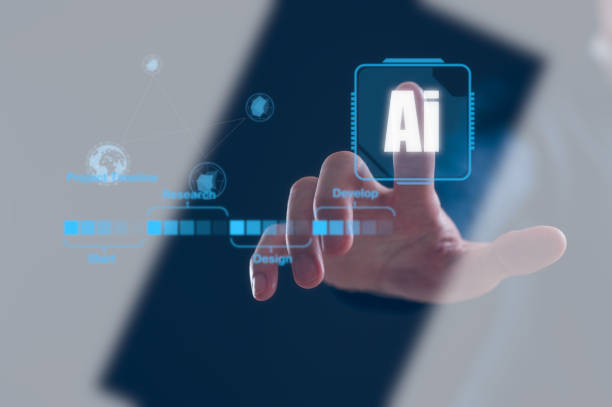
Artificial intelligence robots, due to their unique abilities, have found widespread applications in various industries.
In the manufacturing industry, these robots can perform tasks such as assembling parts, inspecting quality, and packaging products with high accuracy and speed.
The use of artificial intelligence robots in this industry can lead to increased productivity, reduced costs, and improved product quality.
In the medical industry, artificial intelligence robots can assist doctors in complex surgeries, distribute medications, and care for patients.
These robots can operate with high precision and reduce the risk of error.
In the logistics industry, artificial intelligence robots can assist in warehousing, transporting goods, and delivering packages to customers.
These robots can find optimal routes and reduce delivery times.
In the agricultural industry, artificial intelligence robots can assist in planting, tending, and harvesting crops.
These robots can use sensors and artificial intelligence algorithms to examine soil and plant conditions and make decisions about irrigation, fertilization, and pest control.
In general, artificial intelligence robots can be used in any industry that requires high accuracy, speed, and repeatability.
| Industry | Applications |
|---|---|
| Manufacturing | Assembly, Quality Inspection, Packaging |
| Medical | Surgery, Medication Distribution, Patient Care |
| Logistics | Warehousing, Transportation of Goods, Package Delivery |
| Agriculture | Planting, Tending, Harvesting |
Benefits of Using Artificial Intelligence Robots
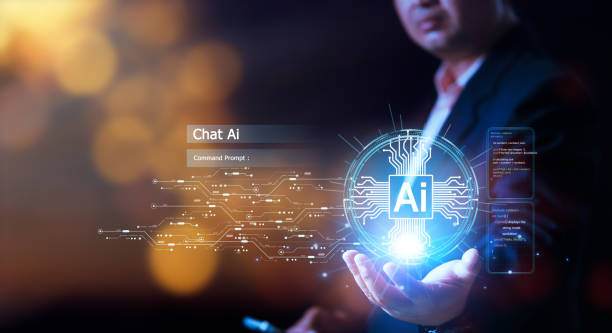
The use of artificial intelligence robots has numerous benefits that can help improve the performance and efficiency of organizations and various industries.
One of the most important benefits is increased productivity.
Artificial intelligence robots can perform tasks with higher speed and accuracy than humans and work continuously without getting tired or needing rest.
This can lead to increased production and reduced completion times.
Another advantage is cost reduction.
By using artificial intelligence robots, organizations can reduce the costs of human resources, energy, and raw materials.
Robots can work in dangerous and unsuitable conditions, eliminating the need to hire human resources in these situations.
In addition, artificial intelligence robots can improve the quality of products and services.
They can perform tasks with high precision and reduce errors.
This can lead to increased customer satisfaction and improved organizational reputation.
Artificial intelligence robots can assist humans in decision-making.
They can collect and process a large amount of information and make decisions based on it that humans may not be able to make.
In general, the use of artificial intelligence robots can help organizations become more competitive and operate more successfully in the market.
Are you tired of losing business opportunities due to not having a professional corporate website?
Rasaweb, with its professional corporate website design, helps you:
✅ Build a powerful and reliable image of your brand
✅ Convert website visitors into loyal customers
⚡ Get a free consultation now!
Challenges Facing the Development of Artificial Intelligence Robots
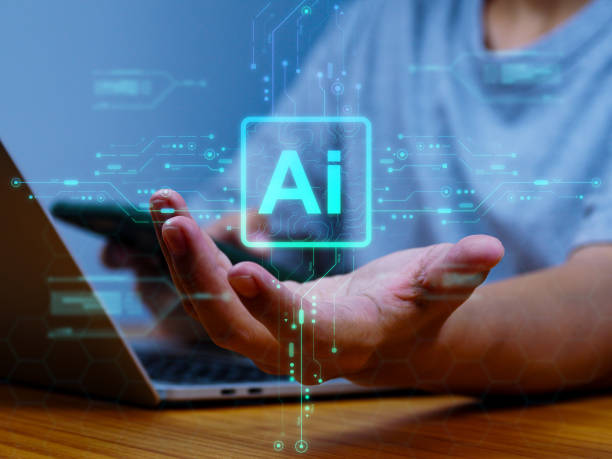
Despite the many advantages, the development and use of artificial intelligence robots also poses challenges.
One of the most important challenges is the high cost of development and implementation.
Developing artificial intelligence robots requires a large investment in research and development, equipment, and specialized human resources.
This can be a barrier for small and medium-sized organizations that have limited financial resources.
Another challenge is ethical and social issues.
The use of artificial intelligence robots can lead to job losses and raise concerns about privacy and security.
Appropriate policies and regulations need to be developed to manage these issues.
In addition, artificial intelligence robots still have limitations in some areas.
They may have difficulty in dealing with unexpected and complex situations and require human intervention.
Also, artificial intelligence robots may not be able to understand and respond to human feelings and emotions, which can lead to communication problems.
To overcome these challenges, more research needs to be done in the field of artificial intelligence and new technologies need to be developed.
Also, appropriate training needs to be provided to human resources so that they can cooperate with artificial intelligence robots and use them effectively.
The Future of Artificial Intelligence Robots
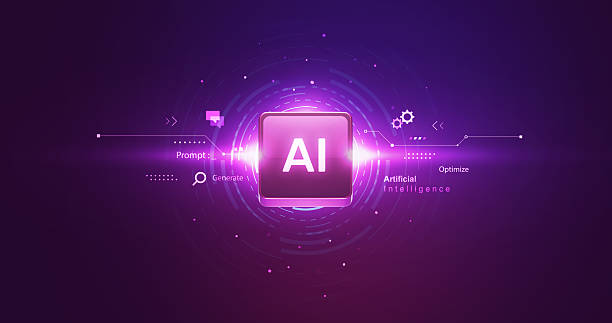
The future of artificial intelligence robots looks very bright and promising.
With increasing advancements in artificial intelligence and robotics, it is expected that artificial intelligence robots will play a more important role in our daily lives.
They can help us in various fields such as home, workplace, hospital, and school.
At home, artificial intelligence robots can perform tasks such as cleaning, cooking, and caring for children and the elderly.
At the workplace, artificial intelligence robots can perform tasks such as typing, translating, and analyzing data.
In the hospital, artificial intelligence robots can perform tasks such as surgery, disease diagnosis, and medication distribution.
In the school, artificial intelligence robots can perform tasks such as teaching, evaluating, and providing feedback.
Artificial intelligence robots can also be used in new fields such as space, sea, and mining.
They can work in dangerous and unsuitable conditions and make new discoveries.
In general, artificial intelligence robots can help us have a better life and make the world a better place.
However, it is necessary to keep in mind that the development and use of artificial intelligence robots should be accompanied by responsibility and ethical behavior to prevent possible problems.
Types of Artificial Intelligence Robots

Artificial intelligence robots can be categorized based on different criteria.
One of the most common methods is categorization by application.
Based on this, artificial intelligence robots can be divided into the following types: 1.
**Industrial Robots:** These robots are used in factory production lines to perform tasks such as assembly, welding, and painting.
2.
**Service Robots:** These robots are used in service environments such as hospitals, hotels, and restaurants to perform tasks such as cleaning, delivering food, and providing information.
3.
**Medical Robots:** These robots are used in hospitals and medical centers to perform tasks such as surgery, disease diagnosis, and rehabilitation.
4.
**Military Robots:** These robots are used in armies and security forces to perform tasks such as reconnaissance, bomb disposal, and surveillance.
5.
**Space Robots:** These robots are used in space to perform tasks such as exploring planets, repairing satellites, and building space stations.
In addition, artificial intelligence robots can be categorized based on the type of artificial intelligence used.
For example, artificial intelligence robots can be divided into the following types: 1.
**Machine Learning-Based Robots:** These robots learn from data using machine learning algorithms and improve their performance.
2.
**Natural Language Processing-Based Robots:** These robots are capable of understanding and responding to human natural language.
3.
**Computer Vision-Based Robots:** These robots are capable of seeing and interpreting images.
4.
**Programming-Based Robots:** These robots perform their tasks using computer programs.
| Type of Robot | Applications |
|---|---|
| Industrial | Assembly, Welding, Painting |
| Service | Cleaning, Delivering Food, Providing Information |
| Medical | Surgery, Disease Diagnosis, Rehabilitation |
| Military | Reconnaissance, Bomb Disposal, Surveillance |
| Space | Exploring Planets, Repairing Satellites, Building Space Stations |
How to Design an Artificial Intelligence Robot
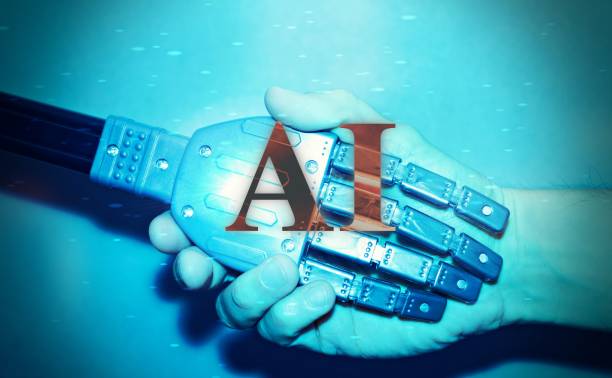
Designing an artificial intelligence robot is a complex and multi-stage process that requires knowledge and expertise in various fields.
The main steps in designing an artificial intelligence robot are: 1.
**Define the Purpose:** First of all, you must specify the purpose of building the robot.
What is the robot designed to do? What tasks should it perform? 2.
**Hardware Selection:** After determining the purpose, you must select the appropriate hardware.
The hardware includes the robot’s body, motors, sensors, and other electronic and mechanical components.
3.
**Software Selection:** Then you must select the appropriate software.
The software includes artificial intelligence algorithms, control programs, and the robot’s operating system.
4.
**Software Development:** At this stage, you need to develop the robot’s software.
This includes writing code, training artificial intelligence models, and testing the software.
5.
**Integration:** After developing the software, you need to integrate it with the hardware.
This includes connecting electronic components, installing software, and testing the system.
6.
**Testing and Evaluation:** Finally, you must test and evaluate the robot to make sure it works correctly and meets the goals.
Artificial Intelligence Robot The designed should have high reliability, safety, and efficiency.
In addition, the robot design should be such that it is easy to use and does not require specific technical knowledge.
Are you losing business opportunities because of an outdated website? With Rasaweb, solve the problem of not attracting potential customers through the website forever!
✅ Attract more high-quality leads
✅ Increase brand credibility in the eyes of customers
⚡ Get a free corporate website design consultation
The Impact of Artificial Intelligence Robots on Employment

The impact of artificial intelligence robots on employment has been a topic of discussion and investigation in recent years.
Some experts believe that artificial intelligence robots can lead to job losses, while others believe that they can create new jobs.
The fact is that the impact of artificial intelligence robots on employment is complex and depends on various factors.
On the one hand, artificial intelligence robots can automate tasks that were previously performed by humans and lead to a decrease in demand for human labor.
This can be especially true in industries that have many repetitive and routine tasks, such as manufacturing, transportation, and customer service.
On the other hand, artificial intelligence robots can create new jobs that did not exist before.
These jobs can be in various fields such as the development, maintenance, and support of artificial intelligence robots.
In addition, artificial intelligence robots can help humans perform their tasks better and more efficiently, leading to increased productivity and economic growth.
This can lead to the creation of new jobs in other industries.
In general, the impact of artificial intelligence robots on employment depends on how this technology is managed and used.
If artificial intelligence robots are managed properly, they can help create new jobs and improve working conditions.
Otherwise, they can lead to job losses and increased inequality.
Ethical Considerations in the Development and Use of Artificial Intelligence Robots

The development and use of artificial intelligence robots brings important ethical considerations that must be addressed.
One of the most important considerations is accountability.
If an artificial intelligence robot makes a mistake or causes harm, who will be responsible? Developers, manufacturers, or users? Appropriate laws and regulations need to be developed to determine accountability in these cases.
Another consideration is privacy.
Artificial intelligence robots can collect a lot of information about users.
How can this information be protected and prevented from being misused? Appropriate privacy policies need to be developed for artificial intelligence robots.
In addition, artificial intelligence robots can learn and reinforce biases and discriminations present in the data.
How can this be prevented and ensured that artificial intelligence robots operate fairly and without discrimination? The training data of robots needs to be carefully selected and artificial intelligence algorithms need to be designed to prevent discrimination.
In general, the development and use of artificial intelligence robots should be accompanied by respect for ethical principles and human rights to prevent possible problems.
Society should be aware of the ethical issues related to artificial intelligence robots and participate in discussions and decisions in this area.
Artificial intelligence robots have various capabilities that were reviewed in the article.
FAQ
| Question | Answer |
|---|---|
| What is an artificial intelligence robot? | An artificial intelligence (AI) robot is a machine capable of understanding its environment, reasoning, learning, and making decisions to perform tasks independently. |
| What is the difference between regular robots and artificial intelligence robots? | Regular robots perform repetitive tasks based on pre-programming, while AI robots can learn from experience, interact dynamically with the environment, and even behave in a way that resembles human intelligence. |
| What are the main applications of artificial intelligence robots? | They are used in industries (manufacturing, assembly), medicine (surgery, diagnosis), services (customer support, domestic), exploration (space, underwater) and many other fields. |
| What technologies are used in the construction of artificial intelligence robots? | Machine Learning, Computer Vision, Natural Language Processing, Deep Learning, and Robotics are among the key technologies. |
| Can artificial intelligence robots have emotions? | Currently, robots do not have emotions in the human sense. They can identify and react to emotions, but they do not experience emotions themselves. |
| What are the main challenges in developing artificial intelligence robots? | Safety, reliability, ethics, autonomy, adaptation to complex environments, and natural interaction with humans are important challenges. |
| How are artificial intelligence robots trained? | They are usually trained using large volumes of data, machine learning algorithms, and deep learning to identify patterns and make decisions. |
| Examples of artificial intelligence robots in everyday life? | Smart robotic vacuum cleaners, customer support chat robots, self-driving cars, and surgical robots in hospitals. |
| Are artificial intelligence robots a threat to human jobs? | Some repetitive jobs may be automated, but at the same time, robots can increase productivity and create new jobs in the development, maintenance, and supervision of these systems. |
| How is the future of artificial intelligence robots predicted? | They are expected to become smarter, more autonomous, and capable of performing more complex tasks, and to interact more closely with humans in different environments. |
And other services of Rasa Web advertising agency in the field of advertising
Smart Advertising Campaign: A dedicated service for customer behavior analysis growth based on proprietary programming.
Smart UI/UX: A combination of creativity and technology to improve SEO ranking by proprietary programming.
Smart Sales Automation: A novel service to increase sales through proprietary programming.
Smart Website Development: An effective tool for online growth with the help of marketing automation.
Smart Marketing Automation: An effective tool for improving SEO ranking with the help of precise audience targeting.
And more than hundreds of other services in the field of Internet advertising, advertising consulting and organizational solutions
Internet Advertising | Advertising Strategy | Advertorial
Resources
Smart Robot with Artificial Intelligence
,The Impact of Artificial Intelligence on the Job Market
,The Future of Robots and Artificial Intelligence
,The Application of Artificial Intelligence in Industry
? To promote your business in the digital world and reach the pinnacle of success, Rasa Web Offering Digital Marketing Agency with services such as Dedicated Website Design, SEO and Content Marketing, is always by your side.
📍 Tehran, Mirdamad Street, next to the Central Bank, South Kazerun Alley, Ramin Alley No. 6
“`

